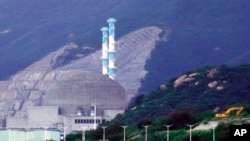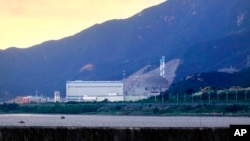Organizers of the coming COP28 climate conference, believing nuclear energy must play a role in weaning the world off fossil fuels, are likely to be comfortable with Chinese plans to make nuclear power a major part of its energy future.
While high-profile accidents at Three Mile Island, Chernobyl and Fukushima have tarnished the image of nuclear power in much of the world, China — the world’s biggest carbon emitter — is pressing ahead with ambitious plans for new nuclear construction.
Beijing has approved at least 21 new power units since 2021, and each year, six to eight new nuclear units are expected to be greenlit, according to a September report in Xinhua, the state-controlled news agency.
The country, which already generates more power through nuclear energy than any country except the United States, aims to meet 10% of its national power needs with nuclear by 2035 and 18% by 2060, the report said.
That effort can be expected to sit well with Sultan Al Jaber, president of the United Nations Climate Change Conference, or COP 28, which opens Nov. 30 in Dubai. Jaber told Agence France-Presse earlier this year that he supports expanding nuclear power, calling it a “robust bridge” in energy transition.
However, China has a long way to go and several obstacles to surmount if it is to reach its goal. Nuclear currently accounts for only 2.2% of its installed electricity generation capacity and ranks last behind other green energy sources including thermal, hydro, wind and solar.
Safety concerns after Japan’s devastating Fukushima incident in 2011 have hampered the growth of nuclear energy in China, according to Philip Andrews-Speed, senior research fellow at the Oxford Institute of Energy Studies.
"What happened after Fukushima was [China] suspended the construction of all new [nuclear] plants. They also sustained this policy that no inland nuclear power plants [can be built]," Andrews-Speed told VOA in a video call.
The plants that will be built are expected to dot the coastline as it takes a lot of fresh water for them to operate, and it’s considered less risky to discharge highly radioactive wastewater into water bodies nearby.
Compared to other clean energy plants such as solar and wind plants, nuclear plants take longer to build and put into operation because of their complex nature and safety concerns, the nuclear expert added. China currently has a shortage of skilled workers in this field.
Thus far, there are about 55 nuclear power plants in China, and more than 20 under construction. Achieving 10% of the energy mix in 2035 could be difficult, according to Bing Lam Luk, laboratory manager at the City University of Hong Kong and the chairperson of the Hong Kong Nuclear Society.
"It takes on average about 10 years or more to build one plant, so unless authorities speed up greenlighting new plants, reaching 10% can be hard. … Another issue is that it’s increasingly difficult to find a new site along the coast to build it," Luk said in an audio call.
Although there has never been a serious nuclear accident in China, some communities are resistant to having a plant nearby. A plan to build a nuclear fuel center in Guangdong was aborted in 2013 because of public opposition, Luk pointed out. He said more public education will be needed to change that perception.
At the same time, safety is becoming less of a concern because of the emergence of fourth-generation and small modular reactors with which, Luk said, a large-scale accident would be "nearly impossible." He said this could make it possible for China to change its policy and start building more nuclear plants inland.
Small modular reactors are more energy efficient than their larger counterparts and easier to transport and install, Luk said. He said the fourth-generation technology now being tested by Tsinghua University in Beijing replaces water coolant with helium, which is more heat resistant, reducing the risk of an explosion.
But a study from Stanford and University of British Columbia found that these reactors, touted as the future of nuclear energy, can produce more radioactive waste than conventional ones.
International cooperation
China’s development of fourth-generation reactors is expected to benefit from the long-established sharing of technical information among countries including China, the United States, France, Japan, South Korea and Britain.
The cooperation between China and France, for instance, started a few decades ago. China’s first two nuclear plants were built near Hong Kong in the mid-1980s with imported technology and managed by state-owned energy firm Electricite de France.
Many joint ventures in China followed and the two countries published a joint statement in April this year on "developing pragmatic cooperation in the field of civilian nuclear energy." They pledged to cooperate on the reprocessing of nuclear waste.
France is ahead of China in the reprocessing of spent fuel, so the two can work on this together, said Andrews-Speed. France is building a center where radioactive waste can be disposed of 500 meters below ground, set to open in 2035. China will only begin constructing a waste site by the 2040s at the earliest.
Geopolitical tensions between China and the West can also be a hurdle. Britain last year removed a Chinese company from its Sizewell nuclear project amid souring U.K.-China relations.
Recently, the U.S. also clamped down on its nuclear trade with China after decades of cooperation owing to "national security interests" and "common defense." China has, however, started exporting its nuclear technology to other countries such as Pakistan.
Asked about nuclear energy’s role at COP28 this year, Luk said nuclear is likely to remain one of the main directions for energy transition discussions.
"Energy storage remains an issue for renewable energy … so nuclear path will likely keep growing steadily," he said.
This report was prepared with support from a Climate Tracker Climate Justice Journalism Fellowship.















